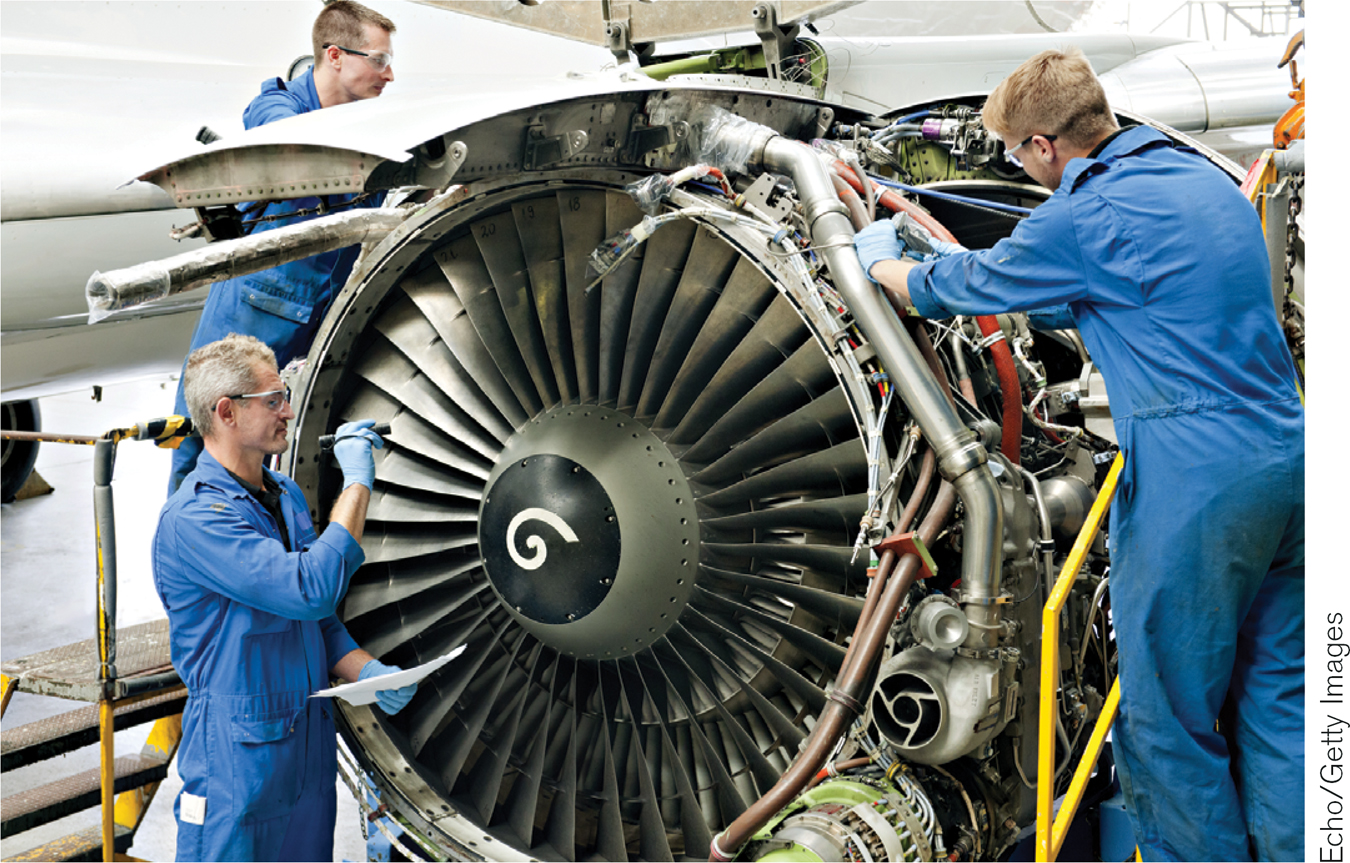When and Why Economists Disagree
Economists have a reputation for arguing with each other. Where does this reputation come from, and is it justified?
One important answer is that media coverage tends to exaggerate the real differences in views among economists. If nearly all economists agree on an issue—

It is also worth remembering that economics is, unavoidably, often tied up in politics. On a number of issues powerful interest groups know what opinions they want to hear; they therefore have an incentive to find and promote economists who profess those opinions, giving these economists a prominence and visibility out of proportion to their support among their colleagues.
While the appearance of disagreement among economists exceeds the reality, it remains true that economists often do disagree about important things. For example, some well respected economists argue vehemently that the U.S. government should replace the income tax with a value-
FOR INQUIRING MINDS: When Economists Agree
“If all the economists in the world were laid end to end, they still couldn’t reach a conclusion.” So goes one popular economist joke. But do economists really disagree that much?
Not according to an ongoing survey being conducted by the Booth School of Business at the University of Chicago. The Booth School assembled a panel of 41 economists, all with exemplary professional reputations, representing a mix of regions, schools, and political affiliations, and officially known as the Economic Experts Panel of Chicago Booth’s Initiative on Global Markets. Four of these economists are pictured here (clockwise from top left): Amy Finkelstein of MIT, Hilary Hoynes of UC Berkeley, Emmanuel Saez also of Berkeley, and Abhjit Banerjee of Princeton.
Roughly once every two weeks these economists are polled on a question of current policy or political interest—
So what do we learn from the survey? That there is much more agreement among economists than rumor would have it, even on supposedly controversial topics. For example, 80% of the panel agreed that the American Recovery and Reconstruction Act of 2009—
Roughly the same percentage—
In the first case, by the way, the panel of economists overwhelmingly agreed with a position widely considered liberal in American politics, while in the second case they agreed with a position widely considered politically conservative.
Were there areas of substantial disagreement among the economists? Yes, but they tended to involve untested economic policies. There was, for example, an almost even split over whether new Federal Reserve tactics aimed at boosting the economy would work.

Photo by Leah Horgan/J-
Shoey Sindel Photography
John D. and Catherine T. MacArthur Foundation
Perhaps even more surprising than the relative lack of disagreement among economists was the relative absence of clear ideological patterns when they did disagree. Economists known to be liberals did have slightly different positions, on average, from those known to be conservatives, but the differences weren’t nearly as large as those among the general public.
So is the stereotype of the quarreling economists a myth? Not entirely: economists do disagree quite a lot on some issues, especially in macroeconomics. But there is a large area of common ground.
One important source of differences lies in values: as in any diverse group of individuals, reasonable people can differ. In comparison to an income tax, a value-
A second important source of differences arises from economic modeling. Because economists base their conclusions on models, which are simplified representations of reality, two economists can legitimately disagree about which simplifications are appropriate—
Suppose that the U.S. government were considering introducing a value-
Because the economists have used different models—
In most cases such disputes are eventually resolved by the accumulation of evidence showing which of the various models proposed by economists does a better job of fitting the facts. However, in economics, as in any science, it can take a long time before research settles important disputes—
The important point is that economic analysis is a method, not a set of conclusions.
!worldview! ECONOMICS in Action: Economists, Beyond the Ivory Tower
Economists, Beyond the Ivory Tower
Many economists are mainly engaged in teaching and research. But quite a few economists have a more direct hand in events.
As described earlier in this chapter (For Inquiring Minds, “The Model That Ate the Economy”), one specific branch of economics, finance theory, plays an important role for financial firms on Wall Street—
Some of the economists employed in the business world work directly for the institutions that need their input. Top financial firms like Goldman Sachs and Morgan Stanley, in particular, maintain high-
Last but not least, economists participate extensively in government. According to the Bureau of Labor Statistics, government agencies employ about half of the professional economists in the United States. This shouldn’t be surprising: one of the most important functions of government is to make economic policy, and almost every government policy decision must take economic effects into consideration. So governments around the world employ economists in a variety of roles.
In the U.S. government, a key role is played by the Council of Economic Advisers, whose sole purpose is to advise the president on economic matters. Unlike most government employees, most economists at the Council aren’t longtime civil servants; instead, they are mainly professors on leave for one or two years from their universities. Many of the nation’s best-
Economists also play an important role in many other parts of the government, from the Department of Commerce to the Labor Department. Economists dominate the staff of the Federal Reserve, a government agency that controls the economy’s money supply and oversees banks. And economists play an especially important role in two international organizations headquartered in Washington, D.C.: the International Monetary Fund, which provides advice and loans to countries experiencing economic difficulties, and the World Bank, which provides advice and loans to promote long-
In the past, it wasn’t that easy to track what all these economists working on practical affairs were up to. These days, however, there are very lively online discussions of economic prospects and policy. See, for example, the home page of the International Monetary Fund (www.imf.org), a business oriented site like economy.com, and the blogs of individual economists, like Mark Thoma (economistsview.typepad.com) or, yes, our own blog, which is among the Technorati top 100 blogs, at krugman.blogs.nytimes.com.
Quick Review
Positive economics—the focus of most economic research—
is the analysis of the way the world works, in which there are definite right and wrong answers. It often involves making forecasts. But in normative economics, which makes prescriptions about how things ought to be, there are often no right answers and only value judgments. Economists do disagree—
though not as much as legend has it— for two main reasons. One, they may disagree about which simplifications to make in a model. Two, economists may disagree— like everyone else— about values.
2-2
Question 2.5
Which of the following statements is a positive statement? Which is a normative statement?
Society should take measures to prevent people from engaging in dangerous personal behavior.
People who engage in dangerous personal behavior impose higher costs on society through higher medical costs.
Question 2.6
True or false? Explain your answer.
Policy choice A and policy choice B attempt to achieve the same social goal. Policy choice A, however, results in a much less efficient use of resources than policy choice B. Therefore, economists are more likely to agree on choosing policy choice B.
When two economists disagree on the desirability of a policy, it’s typically because one of them has made a mistake.
Policy makers can always use economics to figure out which goals a society should try to achieve.
Solutions appear at back of book.
Efficiency, Opportunity Cost and the Logic of Lean Production
In the summer and fall of 2010, workers were rearranging the furniture in Boeing’s final assembly plant in Everett, Washington, in preparation for the production of the Boeing 767. It was a difficult and time-
Lean manufacturing, pioneered by Toyota Motors of Japan, is based on the practice of having parts arrive on the factory floor just as they are needed for production. This reduces the amount of parts Boeing holds in inventory as well as the amount of the factory floor needed for production—

Boeing had adopted lean manufacturing in 1999 in the manufacture of the 737, the most popular commercial airplane. By 2005, after constant refinement, Boeing had achieved a 50% reduction in the time it takes to produce a plane and a nearly 60% reduction in parts inventory. An important feature is a continuously moving assembly line, moving products from one assembly team to the next at a steady pace and eliminating the need for workers to wander across the factory floor from task to task or in search of tools and parts.
Toyota’s lean production techniques have been the most widely adopted, revolutionizing manufacturing worldwide. In simple terms, lean production is focused on organization and communication. Workers and parts are organized so as to ensure a smooth and consistent workflow that minimizes wasted effort and materials. Lean production is also designed to be highly responsive to changes in the desired mix of output—
Toyota’s lean production methods were so successful that they transformed the global auto industry and severely threatened once-
QUESTIONS FOR THOUGHT
Question 2.7
What is the opportunity cost associated with having a worker wander across the factory floor from task to task or in search of tools and parts?
Question 2.8
Explain how lean manufacturing improves the economy’s efficiency in allocation.
Question 2.9
Before lean manufacturing innovations, Japan mostly sold consumer electronics to the United States. How did lean manufacturing innovations alter Japan’s comparative advantage vis-
Question 2.10
Predict how the shift in the location of Toyota’s production from Japan to the United States is likely to alter the pattern of comparative advantage in automaking between the two countries.